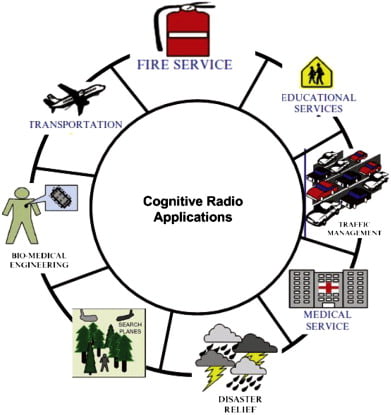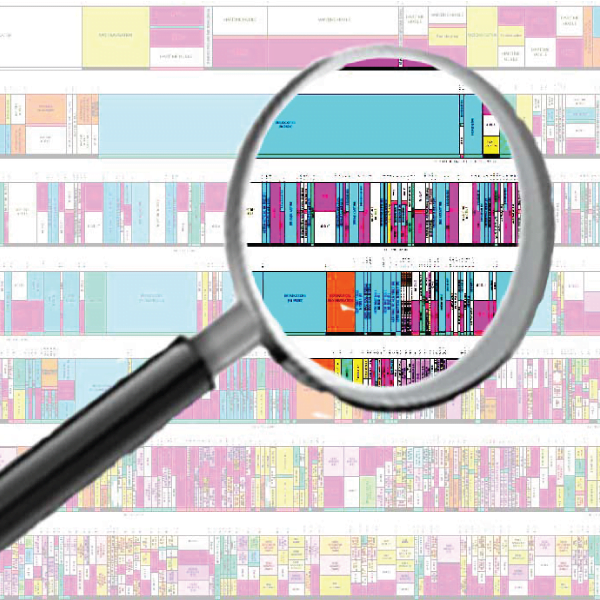Description
Dynamic Spectrum Allocation For Heterogeneous Cognitive Radio Networks With Multiple Channels
ABSTRACT:
This concept represents a solution with cognitive radio network over the secondary users who are bound on to the new network via external frequency sensing. Here a flow based approach for network selection for secondary users in cognitive radio networks. Most approaches in the current literature on cognitive radio do not consider network selection is not established over the secondary users to select. This concept represents a network flow framework for network selection. The approach shown can enable re-assignment of networks to secondary users and also re-assignment of channels to secondary users within the same network and accessing of external accessing network systems. The assignments and re-assignments take into account, the interference caused to primary users, the price each secondary user is willing to pay and the quality of service (QoS) obtained by each secondary user in the external networks systems. the allocation happens between the secondary and primary.
In this paper, we propose a secure cooperative communications scheme for orthogonal frequency division multiple access (OFDMA) cognitive radio networks (CRNs) where a primary base station (PBS) wants to transmit information to some distant primary users (PUs) in the presence of a set of passive eavesdroppers. In our model, the transmission is performed in two consecutive time slots; in the ?rst time slot, PBS transmits while secondary users (SUs) and the eavesdroppers listen. In the second time slot, SUs transmit while PUs, secondary base station (SBS), and the eavesdroppers listen. We consider two schemes for eavesdropping; in the ?rst scheme, the eavesdroppers listen to transmissions from the PBS to SUs, and in the second scheme, we assume that the eavesdroppers apply the maximal ratio combining approach on the received signals in the ?rst and the second time slots for primary network. In proposed model, SUs are allowed to use the licensed spectrum of PUs as long as they help PUs to satisfy their secrecy rate requirement. We assume a frame based transmission where each frame is divided into two consecutive time slots of equal duration. In the ?rst time slot, PBS transmits while the SUs as well as the eavesdroppers listen. In the second time slot, the selected SUs relay the PBS information to the distant PUs. Meanwhile, SUs use the remaining resources to transmit their own information to the SBS while eavesdroppers listen to this transmission. We formulate our proposed schemes as an optimization problem and solve it by dual Lagrange approach. We evaluate our proposed scheme in various situations using simulations and show the ef?ciency of the proposed scheme. An important aspect of the proposed paradigm is that replacing the conventional average interference threshold constraint by the primary secrecy rate constraint does not only decrease the secondary average secrecy rate with respect to the conventional case, but this can actually provide signi?cantly higher secondary average secrecy rate. Dynamic Spectrum Allocation For Heterogeneous Cognitive Radio Networks With Multiple Channels
Considered network: here the digital TV devices and the digital TV devices networks s considered.
Existing Method:
- Primary users are considered to be network individuals single.
- Decode and forward rel
Drawbacks:
- The spectrum channel obtained may identifies low SNR over the network and hard to attain the efficient data on much needed time.
Proposed system:
- Genetic algorithm
- Efficient Signal transmission over the primary and secondary users system with efficient network selection with interference consideration and throughput efficiency analysis over multiple primary and secondary users system using several codes.
Fig: Network consideration
Fig: SU Network selection
Advantages:
- Decision based sensing and acquiring the available spectrum over the network leads to analyze the network available in front of the system and feasible to attain much high data rate over the networks
- Quality of service (QoS) obtained by each secondary user will increase high in a manner.
Applications:
- Urgent needed data transfer application
- Networks under people much unreachable area
Software Requirement:-
- MATLAB 7.8 or above versions
References:
[1] S. Haykin, ?Cognitive radio: brain-empowered wireless communications,? IEEE Journal on Selected Areas in Communications, vol. 23,
- 2, pp. 201?220, February 2005.
[2] Y. Li and A. Nosratinia, ?Hybrid opportunistic scheduling in cognitive radio networks,? IEEE Transactions on Wireless Communications,
vol. 11, no. 1, pp. 328?337, January 2012.
[3] Z. Shi, T. Tan, K. C. Teh, and K. H. Li, ?Energy efficient cognitive radio network based on multiband sensing and spectrum sharing,? IET
Communications, vol. 8, no. 9, pp. 1499?1507, June 2014.
[4] O. Simeone, I. Stanojev, S. Savazzi, Y. Bar-Ness, U. Spagnolini, and R. Pickholtz, ?Spectrum leasing to cooperating secondary ad hoc networks,? IEEE Journal on Selected Areas in Communications, vol. 26, no. 1, pp. 203?213, January 2008.
[5] W. D. Lu, Y. Gong, S. H. Ting, X. L. Wu, and N. T. Zhang, ?Cooperative OFDM relaying for opportunistic spectrum sharing: Protocol design and resource allocation,? IEEE Transactions on Wireless Communications, vol. 11, no. 6, pp. 2126?2135, June 2012.



































































































































































































































































































































































































































































































































































































































































































































































































































































































































































































































































Customer Reviews
There are no reviews yet.